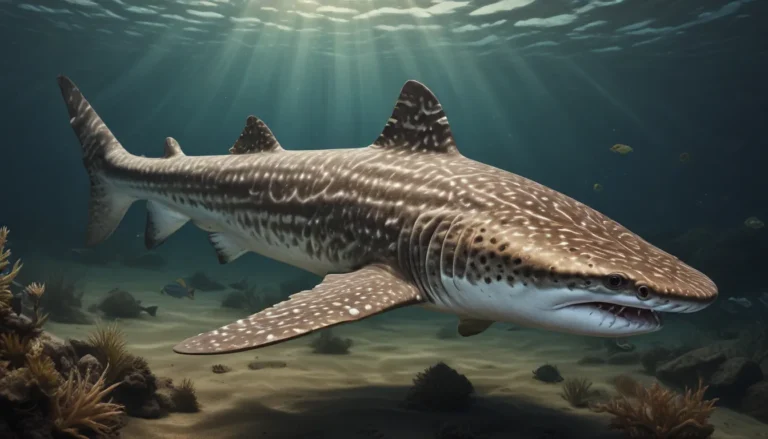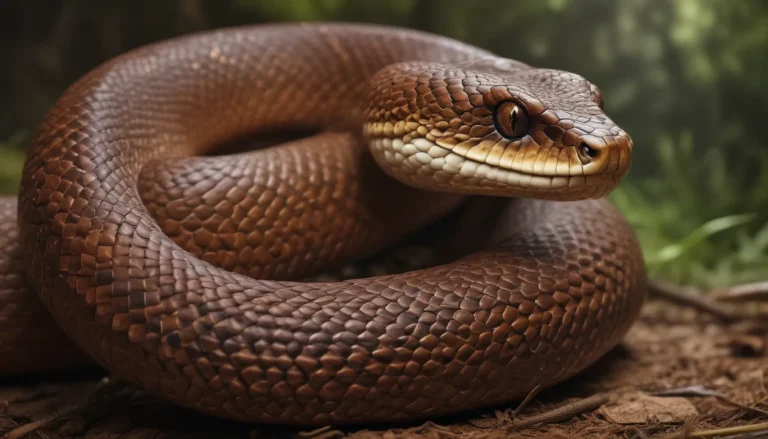The pictures we use in our articles might not show exactly what the words say. We choose these pictures to make you interested in reading more. The pictures work together with the words but don’t take their place. The words still tell you the important facts.
Hey there, nature enthusiasts! Are you ready to dive into the icy world of one of the Arctic's most intriguing inhabitants? Today, we're going to explore the fascinating life of ringed seals, those adorable, ring-patterned creatures that call the frozen north their home. So grab a warm drink, get cozy, and let's embark on this chilly adventure together!
1. The Namesake Rings
Let's start with the obvious – their name! Ringed seals (scientifically known as Pusa hispida) get their moniker from the distinctive light-colored rings or bands that decorate their dark fur. It's like nature gave them their own unique fashion statement!
Fun Fact: These rings aren't just for show. They're actually a result of the seal's molting process, where new fur grows in lighter than the old fur. Talk about a natural makeover!
2. Small but Mighty
Don't let their size fool you. Ringed seals might be the smallest of the Arctic seal species, but they're tough as nails. On average, these little warriors grow to about 4 to 4.5 feet in length and weigh between 110 to 150 pounds. That's like a big, blubbery dog!
3. Masters of the Icy Domain
If there's one thing ringed seals are experts at, it's living on and around ice. These clever creatures have some nifty adaptations that make them true ice aficionados:
- Sharp Claws: Their foreflippers are equipped with sturdy, sharp claws that they use to create and maintain breathing holes in the ice. These holes can be through ice as thick as 6 feet or more!
- Cozy Lairs: In winter and early spring, ringed seals take ice living to the next level. They carve out snow caves, or "lairs," above their breathing holes. These snug hideaways provide shelter from the harsh Arctic weather and help protect seal pups from predators.
4. Deep Sea Divers
Hold your breath, folks, because ringed seals are incredible divers! These aquatic acrobats can:
- Stay underwater for up to 45 minutes
- Dive to depths over 300 meters (that's nearly 1000 feet!)
Imagine holding your breath that long while swimming that deep. It's no wonder these seals are considered one of the most well-adapted Arctic marine mammals!
5. A Diverse Arctic Menu
What's on the menu for a ringed seal? Well, quite a lot actually! These opportunistic eaters have a varied diet that includes:
- Fish (like Arctic cod and herring)
- Crustaceans (shrimp and crabs)
- Occasionally, even smaller seals!
Their diverse palate helps them adapt to the changing availability of food in their harsh Arctic environment. Talk about being flexible with your meal plans!
6. The Sound of Seals
You might think the underwater world is silent, but ringed seals would beg to differ. These chatty creatures have a whole repertoire of vocalizations:
- Trills
- Growls
- Clicks
These sounds help them communicate with each other, navigate their icy environment, and possibly even warn off predators. It's like an underwater Arctic symphony!
7. Slow and Steady Parenting
When it comes to reproduction, ringed seals take the "quality over quantity" approach. Females typically give birth to just one pup each year. These devoted moms nurse their pups for about two months, teaching them the ropes of seal life before they're ready to venture out on their own.
8. Cultural Significance
Ringed seals aren't just important to the Arctic ecosystem; they also play a crucial role in the lives of indigenous Arctic communities. For generations, these seals have been an integral part of their:
- Diet
- Clothing
- Cultural practices
It's a beautiful example of the deep connection between humans and wildlife in one of the world's harshest environments.
9. Built for the Cold
Living in the Arctic requires some serious cold-weather gear, and ringed seals come fully equipped:
- Blubber Layer: A thick layer of blubber keeps them insulated in frigid waters.
- Dense Fur: Their coat is made up of short, dense fur that helps repel water and keep them warm.
It's like they're wearing a built-in wetsuit and down jacket all in one!
10. A Circumpolar Range
Ringed seals are true citizens of the Arctic world. They can be found in all seasonally ice-covered seas of the Northern Hemisphere, including:
- The Arctic Basin
- The Bering Sea
- The Labrador Sea
- The Sea of Okhotsk
- The Baltic Sea
Some populations even live in freshwater lakes like Lake Ladoga in Russia and Lake Saimaa in Finland. Talk about adaptability!
11. The Challenge of Climate Change
Unfortunately, like many Arctic species, ringed seals are facing challenges due to climate change. The reduction in sea ice coverage and snow depth can affect their ability to:
- Create and maintain lairs
- Find suitable breeding sites
- Avoid predators
It's a stark reminder of how global warming is impacting even the most remote corners of our planet.
12. Polar Bear’s Favorite Snack
In the circle of Arctic life, ringed seals play a crucial role as the primary prey for polar bears. These bears spend a significant portion of their time on sea ice, hunting for ringed seals. It's a testament to the ringed seal's importance in the Arctic food chain.
13. Seasonal Molting
Every year, ringed seals go through a process called molting, where they shed their old hair and grow a new coat. During this time, they often bask on the ice, soaking up the sun's rays. It's like a seal spa day!
14. Impressive Population Numbers
Despite the challenges they face, ringed seals are still numerous. The Arctic ringed seal subspecies, which is the most abundant, is estimated to have a population of over 2 million individuals worldwide. In U.S. waters alone, there are thought to be over 300,000 ringed seals.
15. A Species with Subspecies
Ringed seals are so adaptable that they've evolved into several distinct subspecies:
- Arctic ringed seals
- Okhotsk ringed seals
- Baltic ringed seals
- Ladoga ringed seals
- Saimaa ringed seals
Each subspecies has unique adaptations to its specific environment, showcasing the incredible diversity within this single species.
Wrapping Up Our Icy Adventure
As we come to the end of our journey into the world of ringed seals, it's clear that these amazing creatures are true marvels of the Arctic. From their unique adaptations for life on the ice to their important role in both the ecosystem and human cultures, ringed seals are a testament to the incredible diversity and resilience of life on our planet.
But their story is also a reminder of the delicate balance of nature and the impacts our actions can have on even the most remote habitats. As we face the challenges of climate change and environmental conservation, let's keep these remarkable animals in mind and do our part to ensure they continue to thrive in their icy kingdom for generations to come.
So the next time you think about the Arctic, remember the ringed seal – that small but mighty creature with the fashionable spotted coat, diving deep beneath the ice and playing its crucial role in the grand tapestry of Arctic life. They may be far away, but their story is an important part of our shared global ecosystem.
Keep exploring, keep learning, and keep appreciating the wonders of our natural world. Who knows? Maybe one day you'll have the chance to see a ringed seal in person, basking on an ice floe under the midnight sun. Until then, stay curious and keep that spirit of adventure alive!






